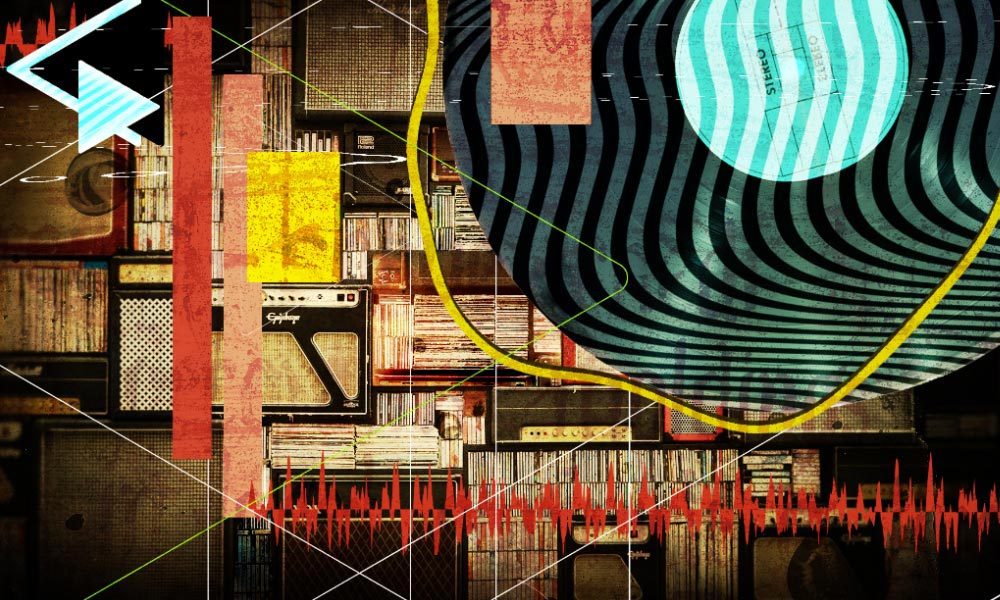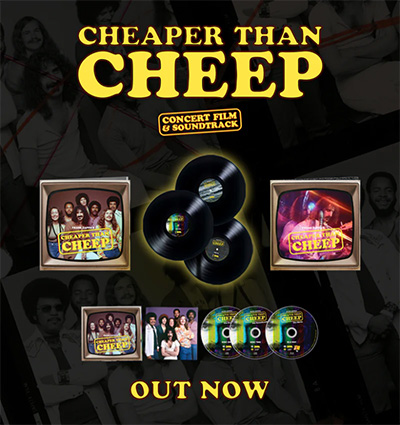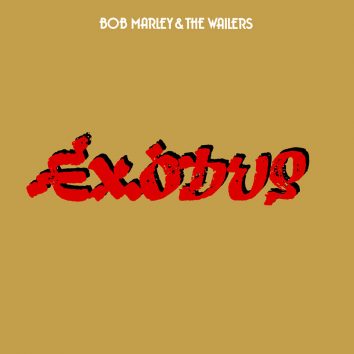The Album Isn’t Dead. Long Live The Long-Player
Despite the claims of many in a streaming world, the album isn’t dead. Taylor Swift and Sam Smith are just a few artists keeping it alive.

The long-player is a relic, we’re assured on a daily basis. An artform that stubbornly refuses to recognize its obsolescence and was stepped over by the single on music’s evolutionary ladder, consigned to a sad extinction sometime in the early 00s. Who, in this pop-ist, piecemeal day and age, wants to argue that the album isn’t dead? That, in fact, it remains the ideal artistic form of the 21st Century, not just the 20th? That’s some Luddite-talking stuff right there, right?
And yet… they stab it with their steely knives, but they still can’t kill the beast. Maybe instead of Eagles, we should be quoting Pointer Sisters: we want a lover – and an artist – with a slow hand. Take it from Anita: not everything great in life is over in four minutes.
Is the album dead?
The fortunes of the album are tied to that of rock’n’roll’s in a lot of people’s minds. If one is in decline, then so is the other. That’s not an arbitrary connection. When most of us think of the great albums, we think The Beatles’ Sgt Pepper’s Lonely Hearts Club Band, The Rolling Stones’ Exile On Main St… records that had some kind of a thread, however loose, connecting 10-16 tracks, reflecting a kind of glorious pomposity that is most familiar to the Fender-wielding male. But we can’t wholly depend on them to keep the album vital into the 2020s and beyond. It was an artistically contemplative pop singer, Frank Sinatra, who essentially invented the album as we know it, so it’s appropriate that it’s thoughtful pop singer-songwriters such as Taylor Swift who are saving it in the 21st Century.
This writer asked Swift a few years ago, after 1989 came out, why she remained so album-focused when so many of her contemporaries see that as anachronistic. “It’s just a personal decision from artist to artist,” she told me, “but I’d really much rather write a novel than a bunch of short stories. And I’d rather be known for a collection of songs that go together and live together and belong together. These are essentially installments of my life, two years at a time. And I work really hard to make sure that those installments are good enough to also apply to other people’s lives in two-year periods of time. Albums defined my childhood, and they’ve defined my life. And I just hope that they will continue to define people in newer generations’ lives.”
Sam Smith spoke in similar terms when they were between their first and second albums, telling this writer they wanted to create albums that have an arc, while feeling the freedom to go deeper in songs that aren’t designed to be anything more than deep tracks.
“A whole body of music”
“When I was writing my [debut] album, I was worried: are they just gonna care about getting hits? I would be sending them songs which weren’t hits but were lyrically some of my most personal songs – and those ended up being [the label reps’] favorite songs on the record. They were interested in creating an album, too, and I felt so lucky for that, because not a lot of people make albums anymore – concept records – stories from start to finish.”
They continued, “That’s what Beyoncé did with her record and what Adele does with hers. And I think the key in what I’m saying is that we want people to listen to [entire] records, to a whole body of music. I want you to buy into my life, not just one subject in my life.”
The conventional wisdom is that it’s only aging rockers who are tied to the albatross of the aging album format. But in a lot of cases, the opposite is true. A few years ago, Stevie Nicks spoke to me about what was then to be Fleetwood Mac’s first tour in years, and about the age-old expectation that there would be a new album to go with it. She’d already moved on from that model; they had recorded two new songs to put on the digital services, and that would be it. Why bother, she thought?
The master sequencer
“You know, in this day and age, nobody is sitting around waiting for an album from anybody,” Nicks told me. “And that’s unfortunate. That’s not how we want it. If we had felt that there was a reason to rent a house… for eight months to do a record, we would have. And if I make another solo record, it’s not gonna have 14 songs on it. It’s probably gonna have eight songs on it, because it doesn’t seem that the world wants 14 songs now.
“In fact, it seems that the world really only wants two or three songs. So, we’ve turned our heads around a little bit because of the way the music business is, not because of what we want to do. If the world was different, we’d be in making a record right now. And believe me, we wish that it was that world. We really do. We’re really sorry for all the people that don’t get to understand and know and be in love in that world.”
Nicks went on to reveal that she hadn’t given up on the “long form” as an ideal. She’d just transferred that concept to the arc of a live show, and she boasted about how she, more than any of the other band members, cared about and was great at figuring out the order of how a concert should go. “I’m the master sequencer, and even though everybody hates to admit it, I am,” she said. And then, as proof, she added: “I sequenced Rumours.”
A beginning, middle, and end
Here’s a secret: if you ever want to engage with a quality recording artist on a deep, geeky level, chat them up about how they sequenced the songs on their album. It rarely makes for a good quote in an article meant for the general populace, but artists have almost always spent way too much time (which is to say, exactly the right amount of time) thinking about what makes for a great beginning, middle, and end.
Placement adds an additional level of intrigue, for those of us who are still prone to plumbing the mysteries in and artist’s mind. Why did they choose this closing track to be the album’s final artistic testament? Was placing two sonorous ballads together a clumsy mistake, or a brilliant attempt to sustain mood and theme? Is burying the obvious hit deep into an album’s running order a sign of cockiness, or an attempt to place it at a proper mid-point in a narrative; or is it an obvious giveaway that they just mistakenly thought it sucked?
Context matters
Now, there is somebody who thinks albums still matter. And to say that albums matter is to say that context matters. Never mind Sgt Pepper, which probably any of us can agree, benefits from one of the great sequences of all time. Look at “The White Album”, which has a longstanding reputation for being the very opposite of a concept album in how disparate all its threads feel. But one could argue that “Revolution 9” and “Goodnight” are both all the more powerful for having their album-ending avant-garde/lullaby extremes juxtaposed with one another.
You can trace the origins of the album-as-artistic-statement back to the desire to sustain a single mood, or theme, and trace it back to Frances Albert Sinatra. The deluxe 60th-anniversary reissue of Frank Sinatra Sings For Only the Lonely is a timely reminder of just what an innovator The Chairman was in the mid-50s, devoting entire LPs – when the LP format had barely been born – to romantic misery, as he did not only on this heavily orchestrated classic, but also on the bare-bones In The Wee Small Hours Of The Morning.
Of course, Sinatra didn’t build the greatest musical legacy of the 50s (or at least tie with Elvis) purely on quieting down the bobby soxers who’d once screamed for him with abject depression. There were upbeat concept albums, too: Come Fly With Me (songs about travel), Songs For Young Lovers (songs about, well, young love), Come Dance With Me (you get the idea) and, in later years, he delved into expansive, prog-rock-level conceptual mania with Watertown and Trilogy. If you have an issue with albums as music’s greatest artistic medium, Frank’s ghost would like to have a word with you in the alley behind the Sands casino.
The concept of the concept album
But Sinatra was not the first artist to collate songs by theme. Many would point to Woody Guthrie’s Dust Bowl Ballads. And if you think the LP was years away from being invented in 1940, know that this was released as a pair of three-disc sets of 78rpm discs. The word “album” is not synonymous with 12”/33 1/3 vinyl. Artists we think of as folkies or easy-listening crooners were penning concept albums long before Tommy, even if they weren’t grist for Ken Russell or Broadway adaptations.
Somehow though, the album form has come to be associated with a pompous way of thinking, leaving may with mixed feelings about the arrogant peak of the thematic album in the mid-70s. Some may think Rick Wakeman’s album-length adaptation of Jules Verne’s Journey To The Centre Of The Earth is indulgent, but you’d also have to pry it out of the cold, dead hands of many fans.
Looking at it another way, The Who’s Quadrophenia is the apotheosis of rock grandiosity that actually rocks. But maybe this was the beginning of the end of the idea that concept albums were all that mattered by the time Pink Floyd titled their 1981 best-of A Collection Of Great Dance Songs, as if to completely take the piss out of themselves.
The album isn’t dead
As Sam Smith put it, there’s a sense in which almost any good album is a concept album, even if it appears to be a simple collection of songs. Telling a story or not, musicians will always feel the urge to find the throughline in what they do. They’re even better curators of their own work than we are, even if streaming has made every man a taste-testing king. There are still plenty of us left who want a full meal, and now it’s the job of the Swifts, Smiths, and Beyoncés of the world – and maybe a few ambitious, old-school rockers – to satisfy both the grazers and the gorgers.
Discover the tales behind the most bizarre concept albums of all time.














